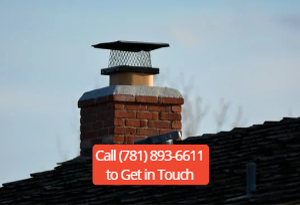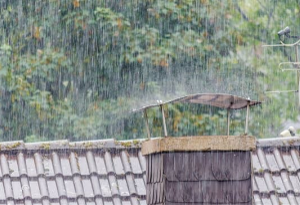Guide to Taking Care of Your Gas Fireplace
Many homeowners prefer gas fireplaces over traditional wood-burning fireplaces because they are far more convenient.
Gas fireplaces are easier to light and control and require less cleaning because they emit no ash and make little mess.
The convenience doesn’t come cheap—they are pricy to install, and for you to keep your investment in good shape, you need to take good care of it.
If you fail to care for your gas fireplace properly, you can expect to deal with costly chimney repair and time-consuming cleaning duties.
So, how do you keep your gas fireplace in top shape? Here are tips to follow:
Ensure that its safe
The first and most important component of caring for your gas fireplace is ensuring it is safe to operate.
You should install a carbon monoxide alarm near the fireplace (and on every other floor of your home) to notify you of any dangerous leaks.
Remember that, unlike smoke from a wood-burning fireplace, carbon monoxide is odorless and difficult to detect, making using a gas fireplace without properly maintained detectors a bad idea.
If the alarm goes off, you should leave your residence as soon as possible to limit exposure to the harmful gas.
If you have children, ensure your gas fireplace is child-proofed before using it. The glass safety covering that protects your fireplace’s firebox can grow extremely hot, endangering young children.
If your children aren’t old enough to comprehend the dangers of touching a hot glass, consider installing a safety grate around the front to keep their little hands from being burned on the hot glass. This could be good for pets as well.
Keep the logs clean
After months of frequent use, logs are bound to get dirty. You should give the logs a thorough scrub to keep them looking attractive.
How you do it will vary depending on the type of wood used in your fireplace, so you should check the chimney manual to confirm how you do it.
Regardless of the log type in your fireplace, you should start by switching off the gas. After dismantling everything, take the logs outside for cleaning.
If this is the first time you are dismantling the fireplace, remember to take photos of it before the deconstruction. This will assist you in reassembling the logs in their original location after cleaning.
If your logs are made of ceramic fiber, which has a light, foam-like consistency, clean them carefully with a stiff brush made of horsehair or ceramic bristles. Water can ruin this type of log, so use a dry cleaning technique to ensure it lasts as long as possible.
Do you have ceramic refractory gas logs in your chimney? These are far more durable; you can clean them with dish soap and water.
You can also easily clean them using a gritty cloth; just be careful not to remove paint by scrubbing too hard.
Clean the glass
While your gas fireplace will not produce mounds of ash from burning wood logs all winter, you must clean its components to keep it looking great.
Cleaning the glass on your fireplace is one of the simplest ways to keep it looking nice all year.
You should clean the glass at least twice a year. Otherwise, due to the natural venting process of the fireplace, it may develop an opaque grayish-white layer that is not only unappealing but also makes it hard to tell if your unit has a problem.
Most homeowners use cream or alcohol-based cleaners to clean the chimney glass but don’t rush to do it as you might have a different type of glass. Instead, you should refer to the manufacturer’s manual and follow the manufacturer’s instructions to do the cleaning.
Avoid harsh cleaning products, such as ammonia-based formulas, that can damage the glass. You also should avoid wiping the glass with anything that will leave residue behind.
Always prepare the chimney for the new season.
When fall arrives and the weather becomes cold, it’s natural to want to light the fire in your fireplace. Before you do this, double-check that everything is in working order.
Chances are you shut off the gas or extinguished the pilot light after the previous winter.
If you try to start your fireplace and it still doesn’t work after you switch on the gas and pilot light, the air in the gas line may be the problem.
Typically, this can be resolved by pressing the pilot button repeatedly until the air has flowed through the line.
If your gas fireplace has a blower, clear out any dust, pet hair, or debris that may have accumulated over the warmer months.
Changing the batteries in your fireplace’s remotes at the start of each season is also a good idea to ensure they’ll work when you need them the most.
Finally, if you haven’t had your fireplace and chimney examined yet, the beginning of autumn is a great time to do so.
Have your chimney inspected by a professional
Most people who own a wood-burning fireplace understand the importance of examining their chimney and fireplace once a year.
Of course, wood fireplaces produce a lot of creosote, which can clog your home’s chimney and prevent your fireplace from ventilating the smoke it creates.
Because gas fireplaces do not burn wood or emit creosote, some homeowners believe they do not need to have these areas properly inspected. This, however, is not the case.
While gas fireplaces do not cause the same problems as wood fireplaces, it is still critical to have them evaluated annually by certified chimney contractors Upper Marlboro.
This is because animals can create clogs in your chimney’s ventilation when building nests. Furthermore, moisture and structural flaws might cause your chimney to crumble, compromising your fireplace’s airflow and forcing carbon monoxide into your home.
Because most homeowners cannot completely inspect the fireplace’s valves and connections, much alone the chimney, bringing in the professionals and having your gas fireplace inspected yearly is always a good idea.
Of course, you need to ensure that the professionals have the necessary experience and know what they are doing. You don’t want someone that will cause harm to your unit, do you?
The post Guide to Taking Care of Your Gas Fireplace first appeared on First Class Chimney Services.
This post first appeared on https://www.firstclasschimneyservices.com




 What causes leaks in chimneys?
What causes leaks in chimneys? Call the Fluesbrothers Chimney & Fireplace for Leaky Chimney Advice
Call the Fluesbrothers Chimney & Fireplace for Leaky Chimney Advice

